Bathroom bliss
Creating a safe yet stylish sanctuary in your bathroom
The bathroom has evolved to become much more than just a functional place, with sensory lighting and smart tech taking it to a whole new level. It will come as no surprise that water mixed with electrics is a dangerous combination. That is why it’s pivotal to put safety first.
Whether you’re looking to add a LED smart mirror or an intelligent shower that sets the perfect temperature as soon as you turn it on, you’ll need to consider the electrical work required. At this point, we would always recommend that you speak to a registered electrician (such as those registered with NICEIC) who can clarify the extent and nature of the electrical works required.
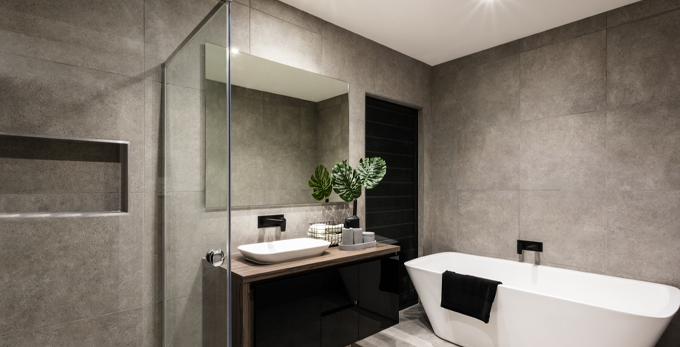
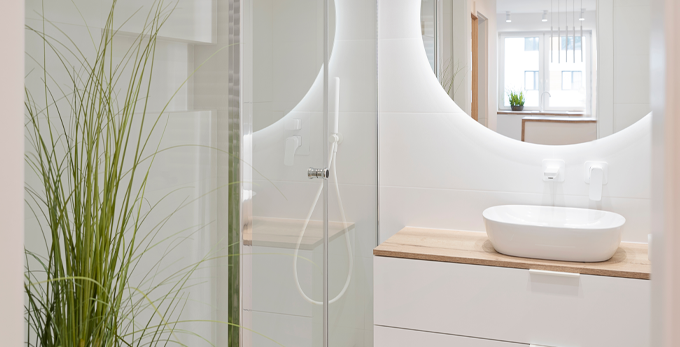
Don't get caught out! The do's and don'ts of electrical work in the bathroom
Do:
- Always use a registered electrical contractor, such as those with NICEIC.
- Purchase all electrical appliances from reputable retailers (preferably from a bathroom specialist).
- Ensure all electrical items are designed for use in a bathroom – this includes your lighting, gadgets, appliances and all cables.
Don’t!
- Do it yourself! We know it is tempting, but trying your hand at DIY electrics is not a clever idea, especially in the bathroom.
- Overlook the importance of an extractor fan.
- Choose just any electrician! Choosing a registered contractor, such as those aligned with NICEIC, is the best way to ensure that the work carried out is safe, up to scratch and compliant with all regulations.
Things to ask your chosen contractor
- Does the required work needs to be notified to the local building control body to comply with Part P of the building regulations? (England and Wales only)
- If it does make sure you understand if your electrician is able to self-certify their work and if they will handle the certification on your behalf.
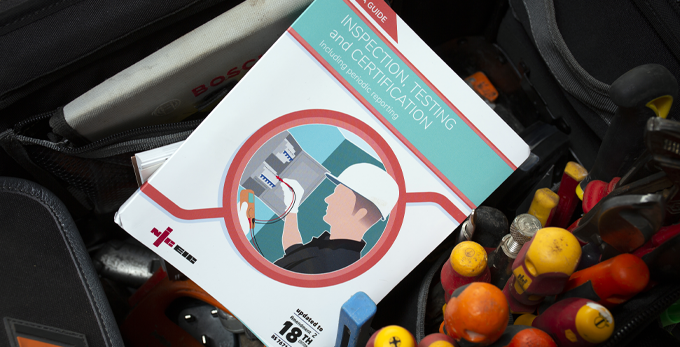
Special considerations in the bathroom
| There are 3 'bathroom' electrical zones that are described in BS 7671 and these are: | |||
|---|---|---|---|
Zone 0 | Zone 1 | Zone 2 | Outside the Zones |
Zone 0 is anywhere inside a bath tub or shower tray itself that can hold water. For a shower without a basin, zone 0 extends to a height of 0.10 m to the full extent of the horizontal footprint of zone 1. Any current-using equipment used within zone 0 must be: - protected by SELV at a voltage not exceeding 12 V AC, with its source* outside of zones 0, 1 and 2, and - protected against both partial and total immersion in water (minimum ingress protection rating of IPX7), and - be declared suitable for use in that zone by the manufacturer, and - be installed fixed and permanently connected. | Zone 1 in simple terms, is the area directly above Zone 0 to the highest fixed shower head or a height of 2.25m from the finished floor level whichever is higher. Any fitting or appliance in Zone 1 must : - have a minimum ingress protection rating of IPX4 (splash-proof) or IPX5 if equipment is likely to be exposed to water jets, during cleaning for example, and - be protected by SELV at a voltage not exceeding 25 V AC, with its source* outside of zones 0, 1 and 2, and - be declared suitable for use in that zone by the manufacturer, and - fixed and permanently connected. Zone 1 does not include Zone 0. | Zone 2 is the area stretching to 600mm outside of the boundary of zone 1 to the highest fixed shower head or a height of 2.25m from the finished floor level whichever is higher. Any current-using equipment within Zone 2 must: - have an ingress protection rating of at least IPX4 (splash-proof) or IPX5 if equipment is likely to be exposed to water jets, during cleaning for example, and - be protected by SELV at a voltage not exceeding 50 V AC, with its source* outside of zones 0, 1 and 2. Shaver supply units conforming to BS 61558-2-5 may be installed. | Low voltage socket-outlets and fused connection units (fused spurs) may be installed at a distance exceeding 2.5 m horizontally from the boundary of zone 1. |
| *Where SELV is used in zones 0, 1 or 2, a source as described in Regulation 414.3 (iv) shall not be used. | |||
How do I know my current bathroom electrics are safe?
Over time the electrical installation in your home will deteriorate. If you detect any of the below it is time to call in a trusted NICEIC contractor who, if required, can undertake an inspection and provide an EICR (this is essentially an MOT of your electrics).
- Noticeable damage to plugs or sockets.
- Fuses blowing or circuit-breakers tripping.
- Sounds of ‘arcing’ (buzzing or crackling).
- Disturbances in the shower or heating supply.
- Flickering lights despite changing the bulbs.
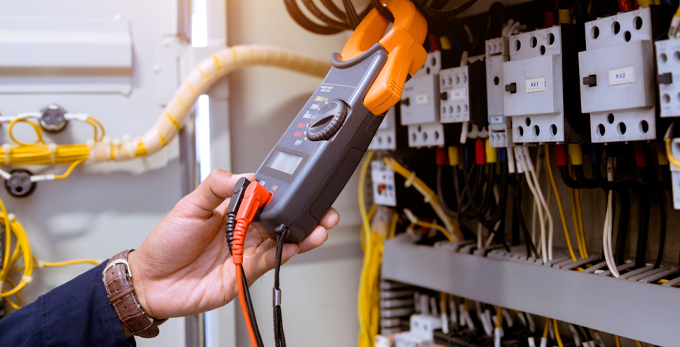
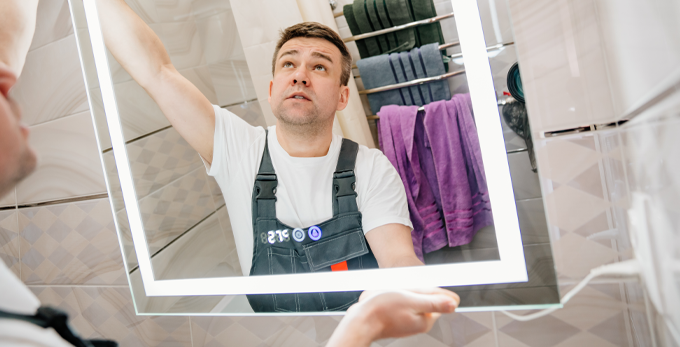
How often should I get my electrics checked?
There is no legal requirement surrounding electrical safety checks in privately owned homes. However, NICEIC recommends that you get an EICR carried out every 10 years. For rented properties, this will be subject to different regulations.
Get the professionals in
It is vital that the work is undertaken and carried out in accordance with the current wiring regulations to ensure maximum safety. Choosing a NICEIC contractor is the best way to ensure the advice you receive is sound and the job is carried out safely and to a high standard.
Through ongoing regular assessments, NICEIC-registered contractors demonstrate that their work meets the required technical standards, and that their knowledge is up-to-date and sound.
For more information on electrical safety in the bathroom, check out Electrical Safety First’s top tips!
